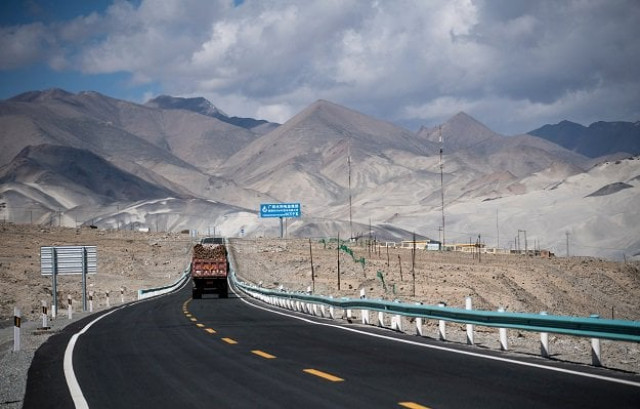FTA with China: a loss-making deal for Pakistan
This has caused lower productivity in firms, low level of employment

A truck drives along the China-Pakistan Friendship Highway before the Karakorum mountain range near Tashkurgan in China's western Xinjiang province. PHOTO: AFP
The relationship between the two countries has a long history and over the last few decades this relationship has been accompanied by significant economic interactions, which include the 2006 Free Trade Agreement (FTA) between Pakistan and China as well as the China-Pakistan Economic Corridor (CPEC).
‘CPEC changing country’s destiny’
According to study conducted by the Lahore School of Economics, Pakistani tariffs on Chinese goods have negatively affected productivity in those sectors that have become more vulnerable to Chinese imports. At the same time, there has been a significant decrease in the value added and value added per worker in those sectors.
Owing to low tariffs on Chinese imports, a reduction has also been seen in the number of firms and the level of employment in these sectors.
The researchers also found that lower Chinese tariffs on Pakistani goods have negatively affected productivity in those sectors that could have potentially benefited from higher access to the Chinese markets.
As a result, there has been a significant decrease in the value-added in those sectors as compared to others. The sectors that benefit from lower Chinese tariffs, have witnessed a significant increase in the level of employment as well as in the total Pakistani exports to China.
The researchers further said that in the context of results drawn on the impact of Chinese tariff concessions to Pakistani exports, it is critical that Pakistan gain the same level of tariff concessions from China as received by the ASEAN countries.
“Only with equal access will Pakistani manufacturers have a chance to move out of the cycle of low productivity firms producing and exporting low value-added goods to China and into higher productivity firms producing and exporting higher value-added goods to China.”
The researchers concluded that since there is a very central industrial cooperation component to CPEC, it is critical that Chinese industrial initiatives yield the maximum economic benefits for local stakeholders in Pakistan.
Some ways of achieving this can be first, ensuring that CPEC-related industrial activities must have well-defined local stakeholders who help maximise the local benefits for firms. This can be achieved by promoting joint ventures between the Pakistanis and the Chinese, which contain a minimum requirement for local partner involvement in each project as well as guarantee that each is allocated a minimum financial share of each project.
The researchers also recommended that the government make pragmatic decisions such as, which sectors to focus on. The decision should take into account which sectors can most benefit from greater productivity, which sector can lead to the greatest increase in value added and which sectors have the greatest potential to increase exports.
Finally, the researchers recommended that in order to increase productivity, employment, value added and exports, there has to be a conscious decision by the policy makers that CPEC-related industrial projects should lead to a move up the technology ladder by firms.
This can be achieved by: first, creating firm level incentives for investment in advanced machinery based on the technological sophistication of output. Second, placing a minimum local content requirement (ie minimum percentage of locally sourced inputs) for all goods created in CPEC industrial zones.
CPEC investment pushed from $55b to $62b
Thirdly, by ensuring that Pakistan’s technology is upgraded through technology transfers from China by ensuring that a minimum level of technology transfer takes place over the life of all CPEC initiatives.
Finally, the only way to ensure higher level of firm productivity, higher wages and a move towards higher value added output is to develop a CPEC-related labour policy that enables the manufacturing sector to switch from low-skilled to high-skilled labour.
Published in The Express Tribune, August 26th, 2017.
Like Business on Facebook, follow @TribuneBiz on Twitter to stay informed and join in the conversation.



















COMMENTS
Comments are moderated and generally will be posted if they are on-topic and not abusive.
For more information, please see our Comments FAQ